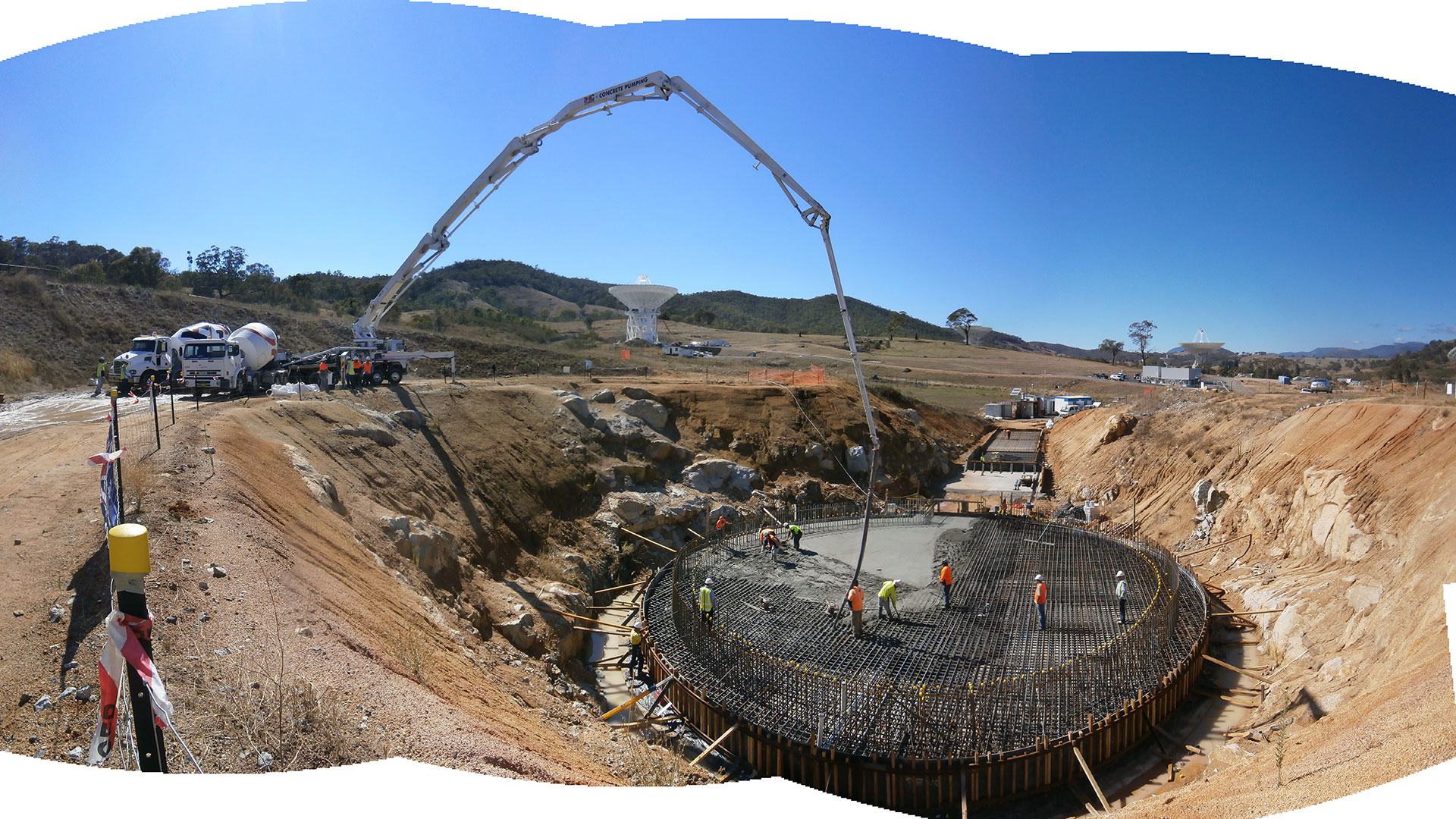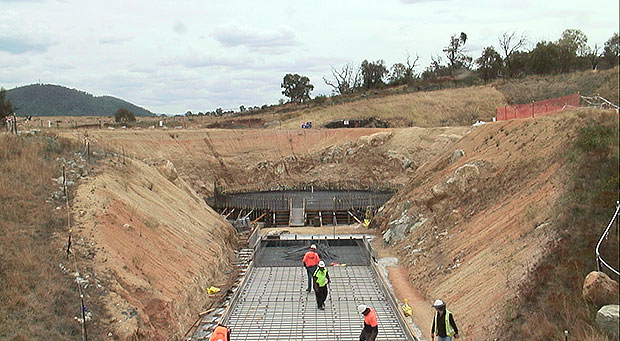Base loading: 400 cubic metres of concrete form the foundations for Deep Space Station 36. Image: CDSCC
Work on Deep Space Staion 35 continues apace for a completion date later this year. In the meantine, the serious business of getting its sister dish, Deep Space Station 36 (DSS36) off the ground really begins.
The levelling layers for the pedestal and rampway were poured in January and are now ready to take the next series of levels, the pedestal base, walls and entry ramp foundations. On Monday 17th February approximately 400 cubic metres of concrete were poured. Nearly 80 concrete trucks ferried the mixture onto the site over a 12 hour period. Each delivery having to be critically timed to allow for the pour to happen and the next ready before the first starts to set.
Contractors ensured that each pour was thoroughly intermixed with the previous layer so that no voids were created in the base which will eventually support the two-storey underground structure that houses the antennas electronics, receiver and transmitter systems.
Webcams: Three webcams focus on the antenna construction which is scheduled over the next three years.
Three webcams are now focussed towards the contruction of DSS36 – Cameras 1 | 3 | 4
Deep Space Station 35 Update
Camera 2 continues to watch DSS35. Recent developments on this antenna include the completion of the groundlevel ‘harddeck’ surrounding the dish and the roadways leading to the harddeck and the rampway to the entrance of the underground pedestal room. The roads provide ease of access for vehicles bringing in the delicate electronic systems which are being installed by Complex personnel.
Dish watch: Most of the work is now underground but the dish will be moving for tests and calibration purposes.
The electronics are housed underground to further isolates these sensitive systems from radio frequency interference by local sources such as TV and radio stations, mobile phones and airtraffic.
Meanwhile above ground, the next few months will see the antenna drive systems being tested and pointing calibration works. DSS35 will come is due to come into full service later this year.
You can also follow the progress of the antenna construction through CDSCC’s Twitter feed: @CanberraDSN
The Canberra Deep Space Communication Complex is managed in Australia by the CSIRO on behalf of NASA’s Deep Space Network. It is one of three stations worldwide, the others located near Madrid (Spain) and Goldstone, California (USA).





18th February 2014 at 4:13 am
Reblogged this on Blogger at the Edge of the Universe..